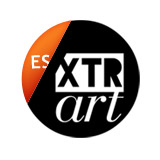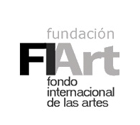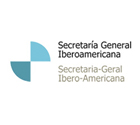Curated by The Black Swan – participants of de Appel Curatorial Programme, 2012 started with the weight of upheaval and revolution on its shoulders. Across the globe, from Egypt to the United States, from Russia to Spain, the necessity for change was heralded by the calls of the disenfranchised. The malcontent that has been expressed transcends geopolitical boundaries, and while it may be different in its local specificities, nuanced similarities can be found in the underpinning narratives.
The means of subversion, after the discussion of twentieth-century ideologies and religious fundamentalisms, seem to go back to their origins – the eternal recurrence as Nietzsche would say. Anarchy emerges upon a vague theoretical horizon, as a nexus between different individuals and communities. There seems to be a general will to form a new ethics of responsible autonomy, for the prospect to be designers of our own existence. It is a time, not by chance, when figures like Bakunin, Russell, Illich or the exponents of the Italian Autonomia movement, are again strongly being quoted. The ‘art world’, autonomous while at the same time heteronymous, as Rancière argues, can only be involved in the state of things.
What can we do from our position in the artistic context nowadays, on the doorstep of a paradigm shift in contemporary societies? Amongst xenophobic discourses and diverted rhetoric of the freedom of speech, in times when culture at large is identified as elitist and its institutions cast adrift to market logics due to ideological positions rather than concrete reasons? It is from a reflection on our positions and possibilities today as curators, currently residing and working in the Netherlands that this exhibition stems.
The poster used as the emblem of Three Artists Walk into a Bar… inevitably recalls the smile on the masked faces of the Anonymous in the street manifestations from New York to Madrid. The image we appropriated and re-worked, however, is from a less recent past. It is, in fact, a poster commissioned by the Soccorso Rosso Militante in the 1970s in Italy, in which the smile of an anarcho-syndicalist who was arrested in 1905 in Paris, became the visual symbol of the motto una risata vi seppellirà1 (a laughter will bury you). The slogan was used against ‘the forces in power’ during the 1968 French protests and again during the 1970s in Italy.
Humour – or the guffaw as the original poster’s caption reports – as a means of protest, is certainly nothing new. The historical use of humour taking shape in the genre of satire or, later, farce, always had as its raison d’être, not only the intention to amuse but to critique powerful relations, to denounce injustice, to subvert and mock social conventions. The French poet Jean de Santeuil once stated: Castigat ridendo mores, meaning changing customs by ridiculing them. On the obverse the repression of laughter began already with Plato, or let’s think of the lost and hidden manuscript about comedy by Aristotle, as described in Eco’s The Name of the Rose.
Censorship of comedians continues to this day. In art practice, the history of humour is equally antique, stemming in modern times, not by chance around the period of the French Revolution, from the satirical work of artists such as William Hogarth, Honoré Daumier or Francisco Goya, whose work would depict the grotesque concealed by the magnificence of public appearances. The use of humour has also been central to the cultural politics of socially engaged art movements such as Dada, the Situationists and Fluxus. It has, furthermore, been a key element in the practice of many feminist artists.
The rise of performance and conceptual art practices coupled with technological advances like consumer video cameras have allowed for artists who use humour as a critical tool to tread the line between mainstream entertainment and performance art.2 Melding the channels of distribution of comedy with contemporary art practice, artists have infiltrated cabaret stages such as the Mudd Club in Tribeca, New York or created travelling shows like Club Nutz (a work subtitled ‘the world’s smallest comedy club’ by artists Scott and Tyson Reerder).
Returning to the present, you might say, in relation to humour and art, there is at the moment a strong revival – perhaps due to the shared and felt need to return to the irrepressible force of satire, of farce, of the dreadful masks of Carnival in order to protest for change. A common general objection is at stake, in a language that is not articulated through concrete demands and instead uses a multitude of creative and light-hearted techniques.
Against this complex backdrop, Three Artists Walk into a Bar… attempts to create a temporary autonomous community, engaging through an open invitation, artists from every graduate and post academic programme in The Netherlands. Without selection or judgement made on the basis of a subjective reading of works, the exhibition brings together all those willing to commit to its terms, in an open horizontal platform.
Rather than an open call, as often happens today, we visited artists at their respective institutions, to actively encourage their participation within the show’s lens. The terms proposed are as follows; that works take place outside of a space dedicated to art, but within the time frame of an exhibition, while investigating the quality of humour in art to level critique.
In addition, working with limited budgets, the artists and curators have committed to distribute narrow funds equally, and beyond this materially realise works through in-kind support and good will. The result is a myriad of voices not aligned within a single space but spread throughout the city, the nation, print media, television channels and online. A community of peers who share concerns, the being in a moment in-between, away but also towards the flow of a professional career, exploring the many possible futures ahead.
Three Artists Walk into a Bar… tests the possibilities of artwork to audience encounters, without the expectations, pre-conditions and prejudices the exhibition space usually implies. Off-site exhibitions from the late 1960s onwards, such as projects curated by Seth Siegelaub or Sonsbeek 71, are our obvious structural reference. The aim is to alter the nature of the artworks experience and to question what constitutes an audience, trying out the multitude of possibilities for the distribution of art, whether the resultant works develop a public of one individual who has a direct relationship to the work, or a large and broad audience.
The resulting works in this exhibition are mostly ephemeral and in some cases ‘interventionist’. Many occur as fortuitous encounters, in which the public is not necessarily required to participate, but for whom experiencing the works might pose the question about the nature of what is seen. Calls to public telephones, strange sounds in supermarkets, objects in books, television apparitions, theatrical plays, images in newspapers and magazines, hackings on the internet, weird meetings in bars, processions along the city streets, poetic internet connections, books and magazines to be photocopied freely… are just some examples of the nature of works taking place within the show’s time-frame.
This open invitation generated an unexpected amount of works that are not directly amusing and not necessarily funny, but that use either the bitter acceptation of humour or its sort of ‘tonic’ function. At times utopian, at times indigestible and inappropriate or politically incorrect, at times moody, at times collaborative and celebratory – and sometimes humorous indeed – a particular antagonistic spirit is generally present. Not one voice individually, but many voices simultaneously are being heard in this exhibition.
All of this represents an attempt to react, to speak out loud that whatever budget cuts might be at stake and whatever material facilities might be erased, art, imagination and culture will never be stopped. And to remain in the spirit of Bakunin, or that captivating poster image of a persistently smiling man…fantasy will destroy power nevertheless…
The Black Swan
Site: Ad Apple
Title: Three Artists Walk into a Bar…
Place: Various physical and non-physical sites, SALTO – Public Broadcast Amsterdam, Het Veem Theater, de Appel Boys’ School in Amsterdam, amongst others.
City: Amsterdam
Country: Holand
Fechas: 13 April–12 May 2012



 Recibirás periódicamente en tu mail una selección de las noticias más interesantes.
Recibirás periódicamente en tu mail una selección de las noticias más interesantes.


No hay comentarios todavía. ¿Quieres ser el primero en decir algo?